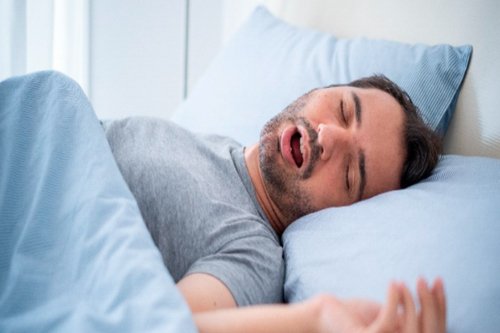Brain and ENT Clinic – Dr Lalit Mahajan In Nagpur & Dr Rachna Gangwani Mahajan In Nagpur
Snoring Remedies in Nagpur

Snoring Remedies in Nagpur is the sound produce when air flows past relax tissues in the throat, causing them to vibrate during sleep. It is a common phenomenon and is usually harmless, but it can be disruptive to the sleep of both the snorer and their sleeping partner. Snoring occurs when the flow of air through the mouth and nose is partially block, leading to the characteristic noise.
snoring is normal and may not require intervention, persistent and loud snoring may be associate with underlying sleep disorders, such as sleep apnea. Sleep apnea involves repeate interruptions in breathing during sleep and can have more serious health implications.
Symptoms of Snoring
Loud, Disruptive Noise:
- Snoring is often recognize by the loud, rhythmic noise it produces during sleep. The sound can range from soft and intermittent to loud and persistent.
Variability in Sound:
- The sound of snoring can vary in pitch, intensity, and duration. It may change base on factors such as sleep position, sleep stage, or the presence of nasal congestion.
Positional Variation:
- Some individuals may snore more loudly or consistently when sleeping in certain positions, particularly on their back. This is known as positional snoring.
Daytime Fatigue:
- Chronic snoring, especially if it is associated with sleep-disordered breathing conditions like sleep apnea, can lead to disrupte sleep and result in daytime fatigue and excessive daytime sleepiness.
Witnesse Apneas:
- In some cases, people who snore loudly may experience brief pauses in breathing, known as apneas. These may be observed by a sleeping partner.
Restless Sleep:
- Snoring may be accompanie by restless sleep, frequent awakenings, or tossing and turning during the night.
Morning Headaches:
- Individuals with snoring-relate sleep disorders, such as sleep apnea, may experience morning headaches due to changes in oxygen levels during the night.
Dry Mouth or Sore Throat:
- Snoring may contribute to mouth breathing, leading to a dry mouth or sore throat upon waking.
Treatment Process for Snoring
- Positional Therapy:
- For individuals whose snoring is primarily positional (more pronounce when sleeping on the back), positional therapy may involve using devices or strategies to encourage side sleeping. This can include special pillows, sleep positioning devices, or wearing a backpack-like device to discourage sleeping on the back treatment.
- Nasal Dilators or Strips:
- If snoring is relate to nasal congestion or airflow restriction, nasal dilators or adhesive nasal strips may be recommende. These devices help to open the nasal passages and improve airflow.
- Oral Appliances (Mandibular Advancement Devices):
- Oral devices, such as mandibular advancement devices, are custom-fitted appliances that reposition the lower jaw and tongue to help keep the airway open. These are often use for snoring associate with mild to moderate obstructive sleep apnea.
- Continuous Positive Airway Pressure (CPAP):
- For individuals with moderate to severe obstructive sleep apnea, CPAP therapy may be recommende. CPAP involves wearing a mask that delivers a continuous stream of air to keep the airway open during sleep.
- Surgical Interventions:
- In cases where snoring is cause by anatomical issues, such as an elongate uvula, excess tissue in the throat, or nasal septal deviations, surgical interventions may be considere. Common procedures include uvulopalatopharyngoplasty (UPPP), genioglossus advancement (GA), and septoplasty.
- Laser-Assiste Uvulopalatoplasty (LAUP) or Radiofrequency Ablation:
- These minimally invasive procedures use laser or radiofrequency energy to stiffen or remove excess tissue in the soft palate, reducing snoring.
Snoring Remedies
Positional Therapy:
- Special Pillows: Using pillows designe to encourage side sleeping or prevent sleeping on the back may help reduce snoring.
Nasal Strips or Nasal Dilators:
- Nasal Strips: Adhesive nasal strips can be applied to the outside of the nose to help widen the nasal passages and improve airflow.
- Nasal Dilators: These devices, insert into the nostrils, aim to keep the nasal passages open, reducing congestion and snoring.
Oral Appliances (Mandibular Advancement Devices):
- These devices, prescribe by a dentist or healthcare professional, help reposition the lower jaw and tongue to keep the airway open during sleep.
Continuous Positive Airway Pressure (CPAP) Therapy:
- For individuals with moderate to severe obstructive sleep apnea, a CPAP machine delivers a continuous stream of air through a mask to keep the airway open.
Hypoglossal Nerve Stimulation (Inspire Therapy):
- A surgically implant device stimulates the hypoglossal nerve, preventing airway collapse in individuals with obstructive sleep apnea.
Palatal Implants or Pillar Procedure:
- Small implants are inserte into the soft palate to stiffen it, reducing vibration and snoring.
Radiofrequency Ablation (Somnoplasty):
- This minimally invasive procedure uses radiofrequency energy to shrink and stiffen tissues in the soft palate, reducing snoring.
Laser-Assisted Uvulopalatoplasty (LAUP):
- In this procedure, a laser is used to reshape or remove excess tissue in the soft palate, reducing snoring.
Surgery (Uvulopalatopharyngoplasty – UPPP):
- Surgical removal of excess tissue in the throat, such as the uvula or part of the soft palate, to widen the airway.
